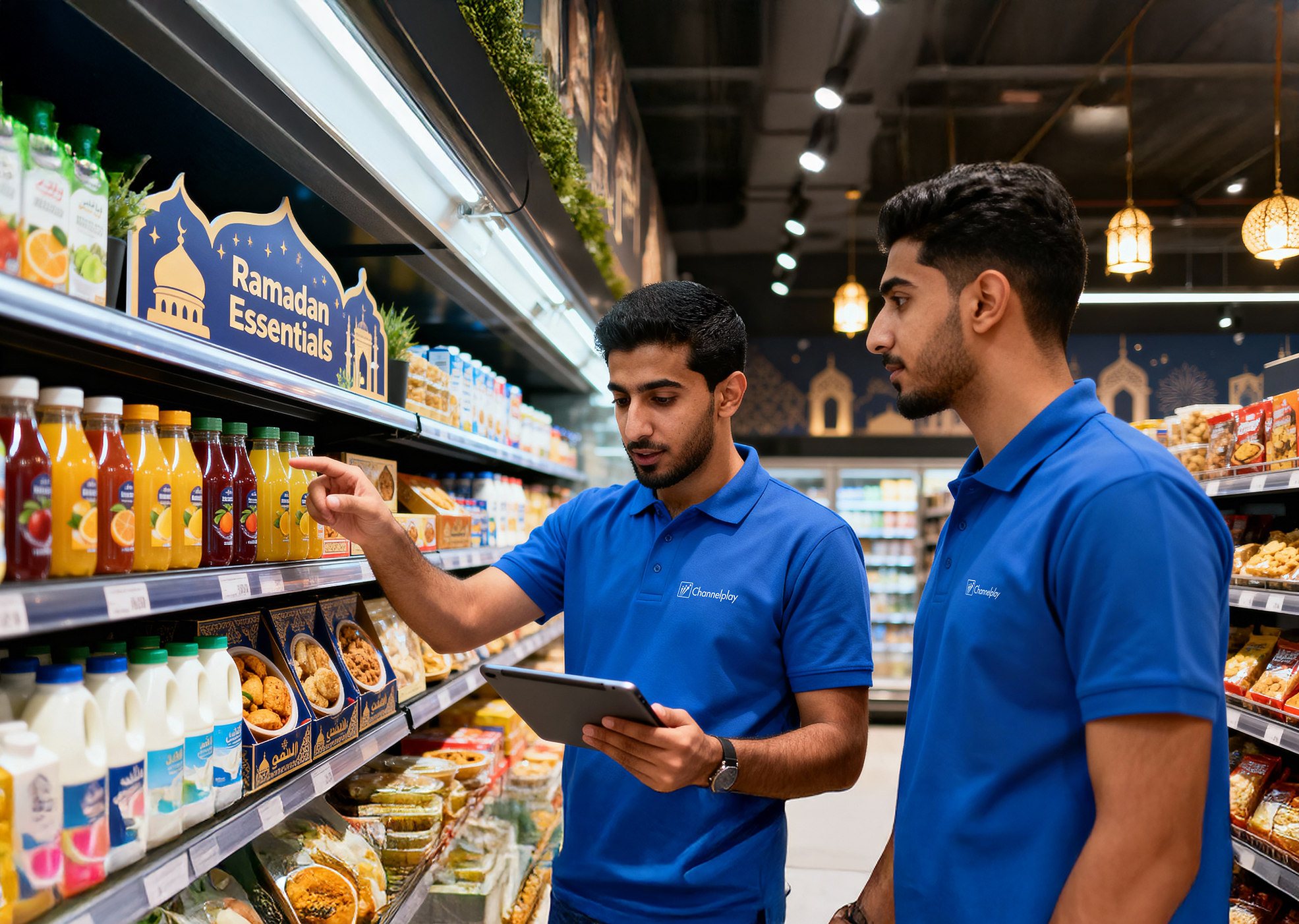7 Power Tips for FMCG Merchandising Success

Fast-Moving Consumer Goods (FMCG) form the backbone of retail in the Middle East, where evolving consumer preferences and expanding retail formats create both opportunity and complexity. GCC supermarkets can stock upwards of 40,000 SKUs, making shelf space a premium commodity. Winning shopper attention and converting it into sales demands strategic, data-driven merchandising tailored to local market dynamics.
Whether you're a brand manager, category head, or retail operator, these seven merchandising power tips combine global best practices with regional insights to help you succeed in 2025.
1. Strategic Product Placement with Planograms and Facings
Planogram adherence is critical to optimize product facings and maximize eye-level presence, where 70% of purchase decisions occur. Leading Middle Eastern retailers like Carrefour UAE and Lulu Hypermarket employ sophisticated planogram tools to ensure proper adjacency and shelf layout, boosting category sales by up to 15%.
End caps and promotional bays near entrances and checkout zones capture shoppers’ impulse buys—a tactic widely used during Ramadan promotions when FMCG demand spikes sharply.
2. Balance Depth and Breadth in Assortment
Middle Eastern consumers value variety but also demand clarity. Offering too many SKUs may confuse shoppers and reduce purchase likelihood by 20%. Brands operating in the Saudi market, for example, often focus on curated assortments emphasizing halal-certified products and regional favorites, streamlining choice without sacrificing appeal.
Use velocity analysis and quarterly SKU reviews to refine your portfolio continuously, keeping only profitable, popular products visible.
3. Effective POP and Price Integrity
Point-of-Purchase (POP) materials and shelf tags should highlight Ramadan bundles, Eid gift packs, and other regionally relevant promotions clearly. Clear pricing ensures shopper confidence—important in GCC markets where price-consciousness is high. Retailers like Spinneys and Choithrams maintain strict price compliance using ESLs, reducing manual errors by 80%.
Studies indicate 30% of GCC consumers may abandon purchases due to pricing inconsistencies, underscoring the need for accuracy.
4. Themed Storytelling and Cross Merchandising
Create culturally resonant themed displays around major regional events. For example, a “Ramadan Essentials” aisle featuring dates, juices, and sweets or a summer “Hydration Station” zone with bottled water and energy drinks cleverly taps into consumer demands and drives basket size.
Cross merchandising complementary goods is prevalent in Dubai’s retail hubs, pairing items like hummus with pita bread or Arabic coffee with dates to enhance shopper convenience and uplift category sales.
5. Retail Execution Tools and Analytics
Merchandising tech adoption is rising across Middle East retail chains. Carrefour UAE leverages retail execution platforms for real-time monitoring of planogram compliance and inventory levels, reducing lost sales from out-of-stock (OOS) by 25%.
Analytics enable teams to track secondary sales and broker better distributor-retailer collaboration, a critical factor in GCC markets with complex supply chains.
6. Align with Trends and Festivals
Capitalize on rising health trends (sugar-free, organic) that have gained traction among Dubai’s growing health-conscious demographic. Seasonal merchandising is especially impactful during Eid, Hajj, and National Day celebrations, when FMCG sales surge by up to 40%.
Proactive SKU rotation and display refreshes during these periods maintain shopper excitement and competitive edge.
7. Invest in Merchandiser Training and Empowerment
Field force excellence is crucial in diverse Middle East markets. Ongoing training with mobile merchandising apps boosts compliance and agility. Local merchandisers familiar with consumer behavior nuances in markets like Bahrain or Qatar enhance execution effectiveness by 15%.
Multilingual digital tools ensure standards are met consistently across culturally diverse teams.
FMCG Merchandising Metrics in Middle East Context
- GCC supermarkets can carry ~40,000 SKUs, intensifying shelf competition
- 70% of buying decisions linked to eye-level facings
- Overchoice can decrease purchase likelihood by 20%
- 30% shopper drop-offs from pricing inconsistencies in price-sensitive GCC markets
- ESLs improve pricing accuracy by 80%
- Seasonal campaigns in ME boost sales by up to 40%
- Skilled merchandisers elevate shelf execution KPIs by 15%
Conclusion: Merchandising Excellence as Growth Strategy
In the Middle East’s vibrant FMCG retail sector, successful merchandising is a blend of data science, shopper psychology, and flawless retail execution tailored to local consumer habits. Effective use of planograms, digital tools, cultural timing, and empowered teams drives market share gains and profitability.
Brands and retailers that master these merchandising principles become leaders in a region where shopper loyalty and competitive differentiation are critical.
